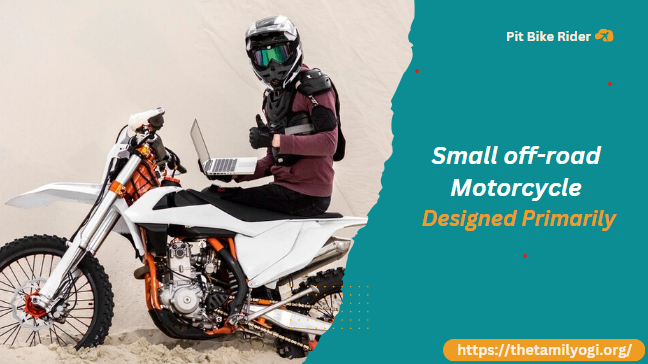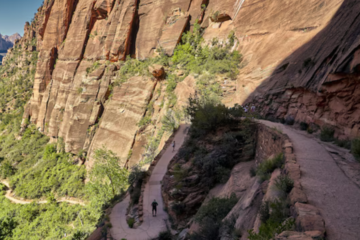Introduction
Pit bikes have surged in popularity among both beginner and experienced riders, offering a fun and accessible way to experience off-road riding. Originally designed for navigating the pits during motocross events, these compact motorcycles have evolved into a category of their own. Whether you’re looking to get into the sport of motocross, need a smaller bike for casual rides, or want to teach young riders, a pit bike is a versatile choice. In this article, we will explore everything you need to know about pit bikes, including their history, types, uses, and how to choose the best one for your needs.
What Is a Pit Bike?
A pit bike is a small off-road motorcycle designed primarily for use in motocross pits. However, they have grown in popularity as recreational vehicles due to their size, affordability, and ease of use. Pit bikes typically have engines ranging from 50cc to 160cc, making them less powerful but more manageable than full-sized dirt bikes. Their compact size and lighter weight make them ideal for younger or smaller riders, as well as for adults who enjoy a nimble and fun ride.
History of Pit Bikes
The origins of pit bikes date back to the 1960s when they were first used by motocross riders to travel around the pits at races. Initially, these were simply small, modified motorcycles, but as their popularity grew, manufacturers began producing purpose-built pit bikes. Over time, they became more sophisticated, with features designed specifically for off-road use. The pit bike market has since expanded, and today, they are used for everything from casual riding to competitive racing.
Types of Pit Bikes
When choosing a pit bike, it’s important to understand the different types available. Here’s a breakdown of the most common types of pit bikes:
1. Mini Pit Bikes
Mini pit bikes are the smallest and lightest category. With engine sizes ranging from 50cc to 90cc, they are perfect for younger riders or beginners. Their smaller size makes them easy to handle, and they are generally less expensive than larger models.
2. Mid-Size Pit Bikes
Mid-size pit bikes typically feature engines ranging from 90cc to 140cc. These are suitable for both beginner and intermediate riders. They offer a good balance of power and control, making them a popular choice for casual off-road riding.
3. Full-Size Pit Bikes
Full-size pit bikes, with engines ranging from 140cc to 160cc, are designed for more experienced riders. They offer more power and are built to handle tougher off-road conditions. Full-size pit bikes are often used in competitive racing due to their superior performance.
Advantages of Owning a Pit Bike
There are several reasons why pit bikes have become so popular among riders of all ages. Here are some of the key advantages of owning a pit bike:
1. Affordability
Pit bikes are generally much more affordable than full-sized dirt bikes, making them a great option for those on a budget. Despite their lower price, many pit bikes are built with high-quality materials and offer excellent performance.
2. Ease of Maintenance
Due to their simple design, pit bikes are easy to maintain. Parts are usually inexpensive and widely available, making repairs straightforward. This ease of maintenance is particularly beneficial for beginners who may not have much experience with motorcycle upkeep.
3. Compact Size
The compact size of pit bikes makes them easy to transport and store. They can fit in the back of most vehicles, and their light weight makes them easy to load and unload. This portability is ideal for riders who travel frequently to different riding locations.
4. Fun and Versatile
Pit bikes are incredibly fun to ride, offering a unique blend of speed, agility, and control. Whether you’re riding on trails, in a backyard, or at a motocross track, pit bikes provide a thrilling experience. Their versatility means they can be used for casual riding, stunts, and even racing.
5. Great for Learning
For those new to off-road riding, pit bikes are an excellent starting point. Their smaller size and lower power output make them easier to control, allowing beginners to develop their skills before moving on to larger, more powerful bikes.
How to Choose the Right Pit Bike
Choosing the right pit bike depends on several factors, including your experience level, intended use, and budget. Here are some key considerations to help you make the right choice:
1. Determine Your Skill Level
Beginner riders should opt for a mini or mid-size pit bike with a smaller engine (50cc to 125cc). These bikes are easier to handle and provide a good introduction to off-road riding. Experienced riders may prefer a full-size pit bike with a more powerful engine (140cc to 160cc) for a more challenging and exciting ride.
2. Consider Your Riding Environment
Where you plan to ride your pit bike will also influence your choice. If you’ll be riding primarily in your backyard or on small trails, a smaller bike with a less powerful engine may be sufficient. For more rugged terrain or competitive racing, a larger, more powerful pit bike is recommended.
3. Set a Budget
Pit bikes come in a wide range of prices, from budget-friendly models to high-end machines. Determine how much you’re willing to spend and look for a bike that offers the best value within your budget. Keep in mind that while cheaper models may be tempting, investing in a quality bike can save you money on repairs and maintenance in the long run.
4. Check for Availability of Parts and Accessories
Before purchasing a pit bike, it’s important to consider the availability of replacement parts and accessories. Some brands and models have more readily available parts, which can make maintenance and upgrades easier and more affordable.
5. Test Ride
If possible, test ride a few different pit bikes before making a decision. This will give you a better sense of which bike feels the most comfortable and suits your riding style. Pay attention to the bike’s handling, suspension, and overall performance during the test ride.
Common Pit Bike Modifications
One of the appeals of pit bikes is the ability to modify and customize them to suit your preferences. Here are some common pit bike modifications:
1. Upgrading the Exhaust System
An upgraded exhaust system can improve your pit bike’s performance by increasing power and reducing weight. It can also give your bike a more aggressive sound.
2. Suspension Upgrades
Better suspension can make a big difference in how your pit bike handles rough terrain. Upgrading to higher-quality shocks and forks can improve comfort and control.
3. Tires
Switching to high-performance tires can enhance your pit bike’s traction and handling, especially in challenging conditions. Different tire treads are available for different types of terrain, so choose the ones that best suit your riding environment.
4. Handlebars and Controls
Upgrading the handlebars, grips, and controls can improve the ergonomics and comfort of your pit bike. Many riders opt for wider or taller handlebars for better control and stability.
5. Engine Modifications
For those looking for more power, engine modifications such as installing a larger carburetor, upgrading the air filter, or even increasing the engine displacement can provide a significant performance boost.
Pit Bike Racing
Pit bike racing has become a popular sport in its own right, with events held around the world. These races often take place on smaller, more technical tracks, which level the playing field and emphasize rider skill over raw power. Pit bike racing is an affordable and accessible way to get into competitive motorsports, and many riders enjoy the challenge and camaraderie it offers.
1. Types of Pit Bike Races
Pit bike racing can vary widely, from casual backyard races to organized events with strict rules and regulations. Here are some common types of pit bike races:
- Flat Track Racing: Involves racing on an oval dirt track. The focus is on speed and smooth cornering.
- Motocross: Takes place on a dirt track with jumps, turns, and obstacles. This type of racing tests both speed and technical skill.
- Supermoto: Combines elements of motocross and road racing, with a track that includes both dirt and pavement sections.
2. Getting Started in Pit Bike Racing
If you’re interested in pit bike racing, start by finding local races or events in your area. Many motocross tracks host pit bike races, and there are often amateur classes for beginners. Make sure your bike is race-ready, with all the necessary safety equipment, and consider joining a pit bike racing club to connect with other riders and learn from their experience.
Maintenance Tips for Your Pit Bike
Regular maintenance is key to keeping your pit bike in top condition. Here are some essential maintenance tips:
1. Oil Changes
Regular oil changes are crucial for the longevity of your pit bike’s engine. Check the oil level before each ride and change the oil according to the manufacturer’s recommendations.
2. Air Filter Cleaning
A clean air filter is essential for proper engine performance. Clean or replace the air filter regularly, especially if you ride in dusty or dirty conditions.
3. Chain Maintenance
Keep your pit bike’s chain clean and properly lubricated to ensure smooth operation. Regularly check the chain tension and adjust it as needed to prevent excessive wear.
4. Brake Inspection
Check your pit bike’s brakes before each ride to ensure they are functioning properly. Replace worn brake pads and bleed the brake lines if necessary to maintain stopping power.
5. Tire Pressure and Condition
Proper tire pressure is important for both performance and safety. Check the tire pressure before each ride and inspect the tires for any signs of damage or excessive wear.
FAQs About Pit Bikes
1. What is the top speed of a pit bike?
The top speed of a pit bike can vary depending on the engine size and modifications, but most pit bikes have a top speed of 25-50 mph.
2. Are pit bikes street legal?
In most cases, pit bikes are not street legal. They are designed for off-road use and lack the necessary equipment, such as lights and turn signals, required for street riding.
3. Can adults ride pit bikes?
Yes, adults can ride pit bikes. Many models are designed specifically for adult riders, offering more power and larger frames to accommodate their size.
4. How much does a pit bike cost?
Pit bike prices can range from $300 to over $1,000, depending on the brand, engine size, and features.
5. Do I need a license to ride a pit bike?
Since pit bikes are typically used off-road, a license is not required. However, if you plan to race, some organizations may require a competition license.
Conclusion
Pit bikes are a fantastic option for anyone looking to get into off-road riding or motocross. With their affordable price, ease of maintenance, and fun riding experience, they offer a unique way to enjoy the outdoors. Whether you’re a beginner learning the ropes or an experienced rider looking for a new challenge, there’s a pit bike out there for you. By choosing the right pit bike and keeping it well-maintained, you’ll be able to enjoy years of thrilling rides and maybe even get into the exciting world of pit bike racing.
You can see latest updates on: Thetamilyogi



